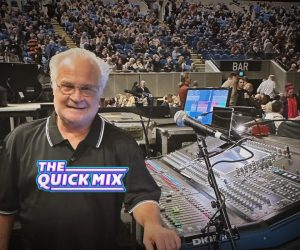
TAYLOR SWIFT IS LOUDER THAN OASIS… WTF?

This is no belated April Fools. A surprising turn of events for the loudness wars, measurements taken of Taylor Swift’s recent 1989 album shows that it’s louder than Oasis’s 1996 album, What’s the Story (Morning Glory).
The infographic (below) was produced for this year’s Dynamic Range Day (dRD – March 27th in the UK) and was created with tongue firmly placed in cheek, but does show that at least for some pop musicians the loudness wars are still battling. Despite the fact that radio, television, Youtube, iTunes, Spotify and most music players all use a volume normaliser to ensure that listeners aren’t constantly reaching for the volume button.
The myth has raged for the last decade or so, that consumers want their music loud and that full dynamic range was somehow less attractive. The fear of losing consumers caused music producers and mastering engineers to compress music within an inch of its life, pushing it to almost distorted levels. Which is part of the reason you’ll see Nicki Minaj (sitting at DR5) being a lot louder than both Motorhead, and the Sex Pistols (sitting quietly at DR11). The problem with this is that heavy compression sucks all the life and dynamics out of the sound, making it flat, dull and not very nice to listen to… But it is loud.

Even though the loudness wars seem to be still alive and fighting, change is beginning to happen in the industry. Proof of which is Jay-Z’s recent launch of the HiDef streaming service Tidal (article link), showing that not all consumers want their music crushed to death. Although, listening to Ms Minaj’s heavily compressed Anaconda through a service like Tidal HD or as a lossless file won’t make much of a difference than listening to as an mp3 or through Spotify. The compression has flattened the definition.
Founder of dRD Ian Sheppard believes things may get worse before they get better, telling CePro:
“Forget 24-bit, there’s a site where you can listen to ‘Gangham Style’ in only 8 bits [link] and most people can’t tell the difference from the 16-bit CD version. Whereas listening to a Neil Young example [link] on the same site, I scored 10/10. What’s the difference? Neil Young is mastered in the ‘loudness sweet spot,’ at pre loudness-war levels, whereas ‘Gangham Style’ has been ‘smashed’ like most music we listen to these days.
So I do think the moves to lossless streaming and high-quality masters are worthwhile, but you’ll only stand a chance of hearing the benefits with music that ignores the ‘loudness war myth’ and has been mixed and mastered with balanced, powerful dynamics.”
All we can do is hope is that more producers learn to appreciate the frequency spectrum and begin to mix their music dynamically, not just so it’s loud.
For a great explanation of how the loudness war affects the music we listen to, watch the video below:
















RESPONSES